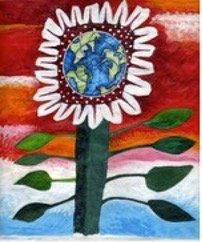CHONG AN (重安) PROJECT IN SEPTEMBER, 2012
Visit and work with the community in Chong An (重安), a village of the indigenous Ah Mei (阿美 ) people, in the remote eastern part of Taiwan.
“Similar to many villages in remote areas, the population in Chong An are mostly elderly and young children. The young people that remained usually have a drinking problem. This poses a serious problem for the village. When the elderly gradually pass away and the young ready to leave the village when grown, it will be the end of the village.
We hope to assist the village community through preservation of culture and economic initiatives. But more importantly, the survival and development of the village will depend on the change of mind and attitude of the residents. Knowing how difficult is the task, we are asking you to visit and work with us. We hope to transform our environment and people’s mind set through awakening people’s ability to imagine and through creating beauty.”
– Zhu Shijie & Tzen Xiumei , Chong An Project directors
CHONG AN, TAITUNG, TAIWAN (2012) (LILY)
Chong An is a tiny village of the indigenous Ah Mei people. Facing the Pacific ocean, its location at the foothill of lush mountains is stunning. Villagers are proud of their cultural tradition and strive hard to preserve it and pass on to the young. Most of the Ah Mei families are Christians. This explains that there are quite a few churches in the area and cemeteries filled with crosses.
Chong An consists of about fifty some families, but only thirty toor forty people live here now. Many of them Many people especially the young have moved away to find jobs, especially the young. There are only sixteen students in the school from first grade to fourth grade. Chong An doesn’t have the desperate poverty of the dumpsite communities that I have visited outside of Nairobi, but it has a different kind of poverty that reminds me of some situations in inner cities in the Unite States. Due to a lack of opportunities and resources, many people depend on government subsidies to live. On the other hand, life in Chong An is rich with innovation and cultural tradition. They have so much to teach the mainstream society in their knowledge of medicine, ecology, and preservation of nature.
Introduction and the First Workshop
Introducing herself to the community, Lily Yeh did a slide presentation sharing her experience in working with community in transforming their own environment in many places in the world. The presentation aimed to show the fun and inclusive nature of the process and also what is possible when the participants come together to envision and take action.
After the presentation, Yeh conducted a workshop where participants drew on paper what they deemed important and beautiful. Many images of ancestors, family members, and traditional patterns appeared. It is great to see that under the heavy Han culture influence, the villagers still hold dear their own cultural heritage and trying to pass them to their young.
We collected the drawings and then we looked at each other’s work and then had a discussion. Participants shared their stories. One child did a picture of himself with his hands hidden behind his back. He explained that was because he had a surprise present for his grandmother. It made the older people very happy.
Another child in the community made a drawing with three people dancing—his grandpa, his grandma, and him.
The First Action – Painting Chong An Community Center
Hoping to revitalize Chong An through art, Zhu and Tzen invited Lily to visit and work with the village residents in 2012. We launch our first art project at the community center. Although it is modest in size but important in history because it is one of the very few authentic structures of the Ah Mei people remaining in the community.
We start with simple steps by drawing triangles on the pillars. Then we create different triangle variations with different color and pattern combinations, to decorate the interior beams.
Painting the exterior wall of Chong An Catholic Church
We cleaned the moss on the wall before painting, and the children were so enthusiastic. Two teenagers passing by on their motorcycle stopped to watch. Drawn into the project by children’s excitement and focus, they became our steady participants throughout the project.












